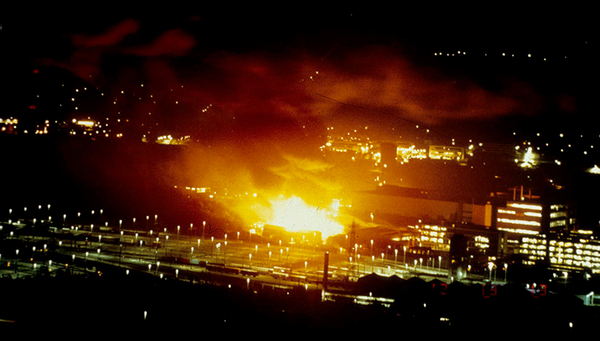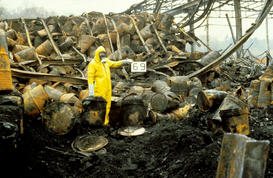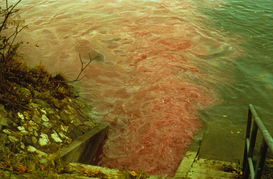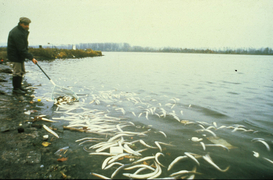Archive detail
Rhine running red, fish dead – 30th anniversary of the Sandoz blaze
October 31, 2016 |
The blaze at the Sandoz plant shattered public confidence in the chemical industry’s self-inspection regime. Action taken by the authorities as a direct consequence of the disaster included the enactment of the Major Accidents Ordinance (StFV) and the establishment of chemical inspectorates. The anti-pollution efforts of the International Commission for the Protection of the Rhine (ICPR) were substantially intensified. Apart from the immediate damage caused, it can now be concluded, 30 years later, that the accident had positive effects overall from the viewpoint of water protection.
In 1986, Eawag experts were closely involved in efforts to analyse the chemical and biological state of the Rhine, and to document the effects of the accident. As they had correctly – although controversially – predicted, the dynamic river system and aquatic populations recovered relatively quickly, i.e. within a few months. This process was promoted by the migration of organisms from the upper reaches, tributaries and side channels and by the rapid cleansing of the contaminated river by floods.
While the risk of a new chemical accident on the scale of the Schweizerhalle disaster has decreased, attention is now being focused on chronic contamination – e.g. from continuous inputs of persistent household and agrochemicals or medicinal products. In recent years Eawag developed a new technique for measuring and analyzing toxic substances in order to be able to identify them at an early stage. Thanks to a combination of high-resolution mass spectrometry and liquid chromatography, previously unknown substances can now be recorded.
The international Rhine monitoring station in Weil am Rhein, near Basel, established as a result of the chemical accident in 1992, has already been using the new measuring technique successfully for several years. The daily measurements records peaks in pollutants in the Rhine in real time, and, ideally, will also shed light on the identity and origin of the substances. The new measurement and analysis technique has a preventative effect on potential polluters and should now be introduced at other locations along the Rhine.
Groundwater in the vicinity of the accident site is also examined thoroughly, as drinking water pumping stations for the region are located not far away. At a specialist conference on 11 November, specialists from the Basel-Land cantonal government, along with Eawag and other partners, will be reporting on the challenges in the water sector.




